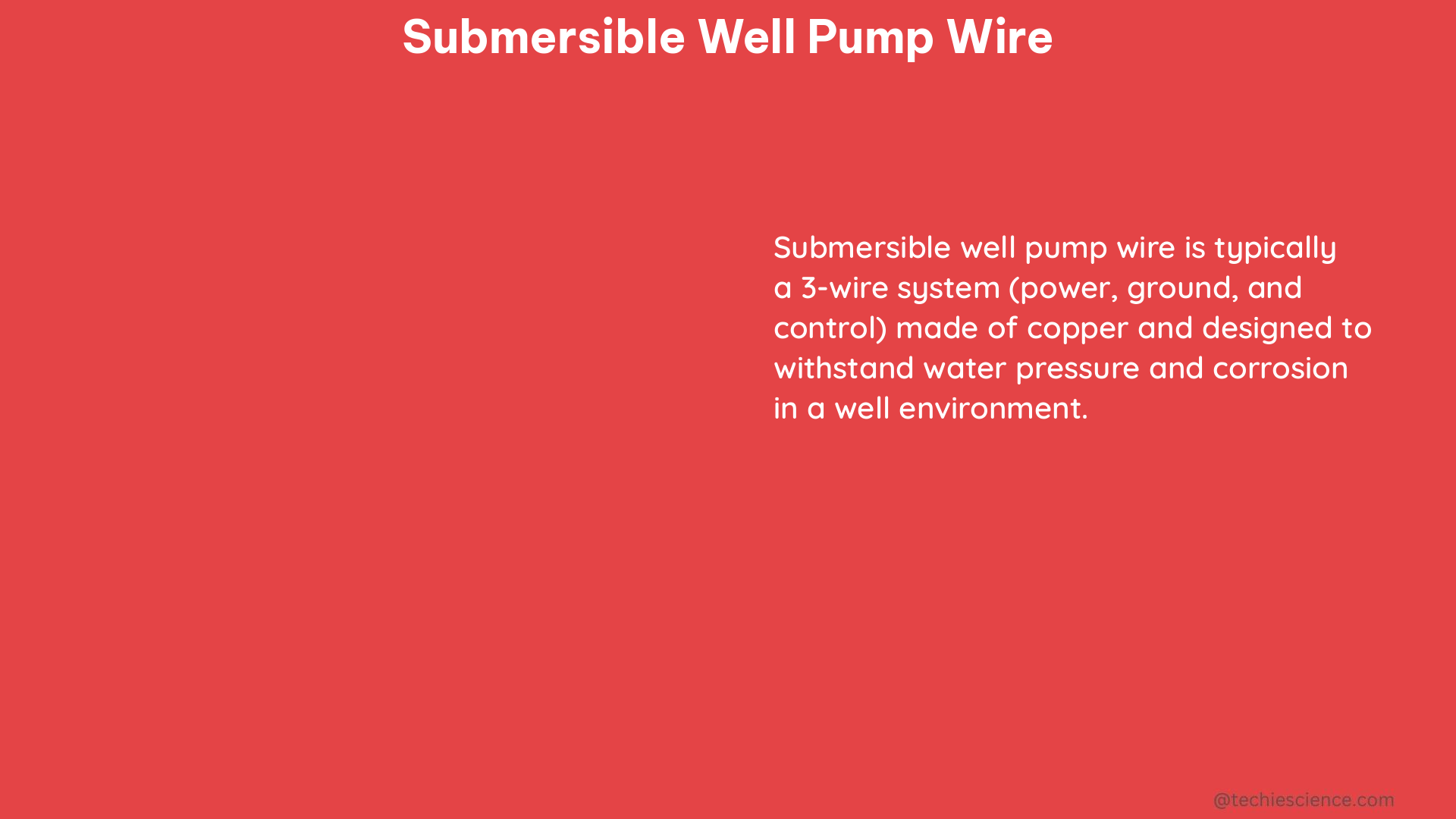Submersible well pump wire, also known as submersible pump cable, is a specialized type of wire designed to operate in the harsh environment of a well pump system. These wires are typically made up of multiple insulated conductors, often in a tri-plex or quad-plex configuration, and are engineered to withstand high moisture levels and potential mechanical stress.
Selecting the Appropriate Wire Gauge
When it comes to choosing the right wire gauge for your submersible well pump, it is crucial to consider the high startup amps of the pump. As a general rule, it is recommended to use a larger gauge wire to handle this initial current surge. For a 120V 3/4HP well pump with a startup amp of 28 amps, a 10 gauge wire is typically recommended. This wire gauge can accommodate the high current draw during pump startup, while also providing sufficient capacity for the lower running amps of the pump.
| Pump Horsepower | Startup Amps | Recommended Wire Gauge |
|---|---|---|
| 1/2 HP | 20 amps | 12 AWG |
| 3/4 HP | 28 amps | 10 AWG |
| 1 HP | 34 amps | 8 AWG |
| 1.5 HP | 46 amps | 6 AWG |
| 2 HP | 58 amps | 4 AWG |
It’s important to note that these are general guidelines, and you should always refer to the manufacturer’s recommendations for the specific pump you are using. Additionally, local electrical codes may have additional requirements or restrictions on wire gauge selection.
Submersible Pump Cable vs. Individual Wires

In the context of well pump systems, submersible pump cable is often preferred over individual THHN/THWN wires. This is because submersible pump cable is designed to be more flexible and durable, making it better suited to the rigors of use in a well pump system. Additionally, submersible pump cable is often rated for direct burial, meaning it can be installed underground without the need for additional protective conduit.
One of the key advantages of submersible pump cable is its resistance to moisture and corrosion. The cable’s insulation and jacket are specifically formulated to withstand the high-moisture environment of a well, ensuring reliable and long-lasting performance. In contrast, individual THHN/THWN wires may be more susceptible to moisture-related issues, potentially leading to premature failure or electrical problems.
3-Wire vs. 4-Wire Submersible Pump Cable
When it comes to the number of wires in a submersible well pump cable, there are typically two configurations: 3-wire and 4-wire.
3-Wire Submersible Pump Cable
A 3-wire submersible pump cable consists of three insulated conductors, typically color-coded as red, black, and yellow. These three wires are responsible for powering the pump’s three-phase motor.
4-Wire Submersible Pump Cable
A 4-wire submersible pump cable adds a separate ground wire to the three-wire configuration. This ground wire is essential for safety, as it provides a path for any electrical faults or leakages to be safely directed to the ground, reducing the risk of electric shock or other hazards.
When installing a submersible well pump, it is crucial to properly ground the system by connecting the ground wire to a grounding rod or other approved grounding system. This ensures the overall safety and reliability of the installation.
DIY Installation Considerations
When undertaking a DIY installation of a submersible well pump and its associated wiring, it is essential to follow all local codes and regulations, as well as the manufacturer’s instructions for the specific pump and cable being used. This includes:
- Wire Gauge Selection: Ensure you use the appropriate wire gauge to handle the pump’s startup and running amps, as discussed earlier.
- Wire Type and Configuration: Choose the correct type of submersible pump cable (3-wire or 4-wire) and follow the manufacturer’s recommendations for the specific installation.
- Grounding: Properly ground the system by connecting the ground wire to a grounding rod or other approved grounding system.
- Physical Protection: Protect the submersible pump cable from physical damage, such as abrasion or crushing, by using conduit or other protective measures as needed.
- Splicing and Connections: Make all splices and connections using waterproof, submersible-rated junction boxes and techniques to ensure a reliable and long-lasting installation.
- Electrical Codes and Regulations: Familiarize yourself with and follow all relevant local electrical codes and regulations to ensure the safety and legality of your installation.
By carefully considering these factors and following best practices, DIY enthusiasts can successfully install a submersible well pump and its associated wiring, ensuring the reliable and safe operation of their water supply system.
References:
- Determining Well Pump Wires
- 3-Wire vs. 4-Wire Submersible Pump
- Recommended Wire Gauge for Well Pump and Float Switch

The lambdageeks.com Core SME Team is a group of experienced subject matter experts from diverse scientific and technical fields including Physics, Chemistry, Technology,Electronics & Electrical Engineering, Automotive, Mechanical Engineering. Our team collaborates to create high-quality, well-researched articles on a wide range of science and technology topics for the lambdageeks.com website.
All Our Senior SME are having more than 7 Years of experience in the respective fields . They are either Working Industry Professionals or assocaited With different Universities. Refer Our Authors Page to get to know About our Core SMEs.